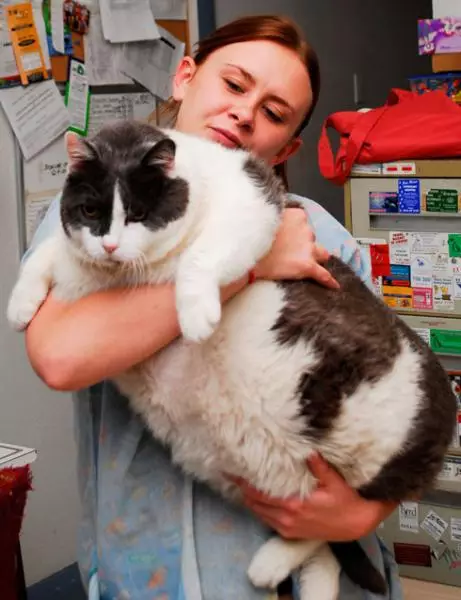In the UK, pet obesity has emerged as a serious concern, with a staggering 39 to 52 percent of cats estimated to fall into the overweight or obese categories. Obesity is clinically defined as a condition where cats are at least 20 percent above their optimal weight, while those that weigh 10 to 19 percent more are classified as overweight. Maintaining a cat’s optimal body weight is crucial for prolonging its lifespan, as both obesity and extreme thinness have been associated with reduced life expectancy. Recognizing and managing a cat’s body weight is not a simple task, as it must be tailored to factors like age and breed. Thus, pet owners and veterinarians often turn to the Body Condition Score (BCS) system, which scores a cat from 1 to 5—1 being very thin and 5 being obese.
The Body Condition Score offers a tangible method for assessing a cat’s weight while considering various factors that contribute to an ideal size. For instance, an obese cat typically has difficult-to-feel ribs due to fat deposits and may exhibit a pronounced abdomen due to a lack of a natural waistline. Having familiarized themselves with the criteria for body weight, cat owners can better evaluate their pets’ conditions. However, awareness of weight alone is insufficient—understanding the complex factors that influence pet obesity is integral to combating this epidemic.
One of the fundamental reasons behind a cat’s weight gain is an imbalanced energy equation—a positive energy balance occurs when the calories consumed exceed those burned. While it might seem straightforward, numerous factors influence this balance. For instance, neutered cats can gain weight more readily due to a metabolic slowdown following surgery. Studies reveal that their energy requirements can decrease by nearly 20 percent after neutering, making portion control vital for maintaining their physical health.
Activity levels also play an essential role in this equation. Cats that lack opportunities for exercise are at a higher risk of becoming overweight, often due to factors such as lifestyle changes, indoor living conditions, or age. Neutering can lead to a reduction in roaming behavior, inadvertently contributing to lower activity levels. The age factor cannot be overlooked—while younger cats are less likely to be overweight, those aged between two and ten years often find themselves battling extra pounds due to decreased energy expenditure.
Feeding habits can significantly influence the likelihood of a cat becoming overweight. Highly palatable, calorie-dense foods can lead to overeating, especially if treats are freely available. Additionally, some medications may contribute to weight gain by either increasing appetite or reducing metabolic efficiency, highlighting the multifaceted nature of dietary influence on obesity. Drugs such as corticosteroids have shown a propensity to exacerbate weight issues in cats, making it imperative for responsible pet ownership to involve open communication with veterinarians regarding any medications being used.
While addressing obesity is crucial for a cat’s health, the approach must be gradual. Rapid weight loss can trigger hepatic lipidosis—a severe liver condition caused by fat accumulation within liver cells. Health risks aside, it is vital for any weight management strategy to be monitored by a veterinary professional, ideally through a structured weight-loss program that considers appropriate dietary changes alongside exercise regimens. Severely overweight cats may take up to a year to reach their healthy weight, underscoring the importance of patience and consistency in managing feline health.
To combat obesity effectively, pet owners should consider dietary changes that involve high-protein, low-carbohydrate diets specifically formulated for weight loss. These diets are beneficial in promoting fat loss while preserving muscle mass. Additionally, encouraging physical activity should be a priority, whether through interactive playtime or by promoting movement within the home.
Creative solutions such as puzzle feeders can enhance both physical activity and mental stimulation for cats, contributing positively to their overall well-being. Once a cat reaches its target weight, transitioning to ‘light’ or reduced-calorie foods is advisable to maintain a healthy weight without overly restricting caloric intake.
It’s essential for cat owners to remain vigilant in monitoring their pets’ weights—both to recognize early signs of weight gain and to ensure that long-term wellness can be maintained. Regular veterinary check-ups can aid in this process, helping to stave off potential weight-related health issues. While the road to managing obesity in cats can be challenging, consistent effort is paramount for securing a happier, healthier life for our feline companions. As the epidemic of feline obesity continues to rise, proactive measures can make a world of difference.


Leave a Reply